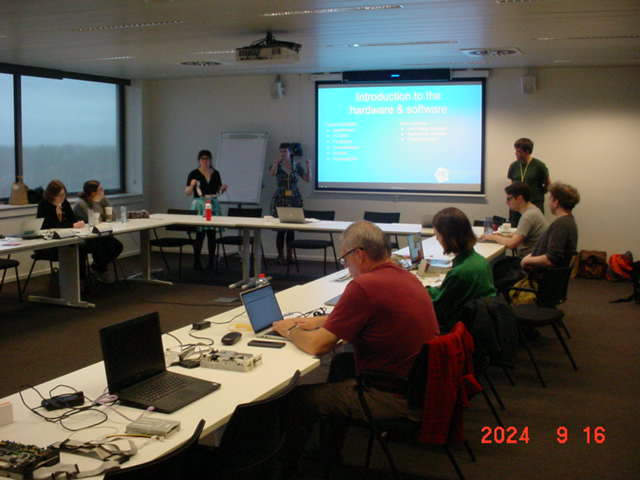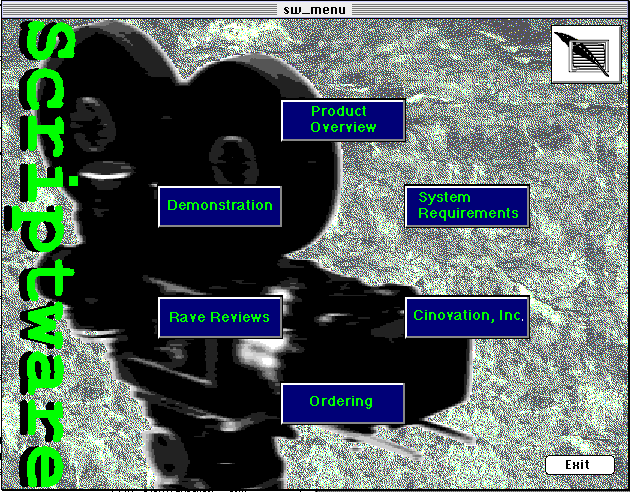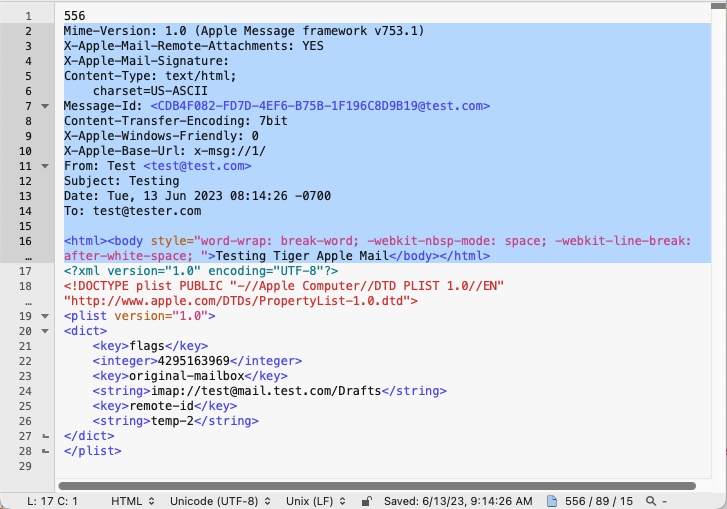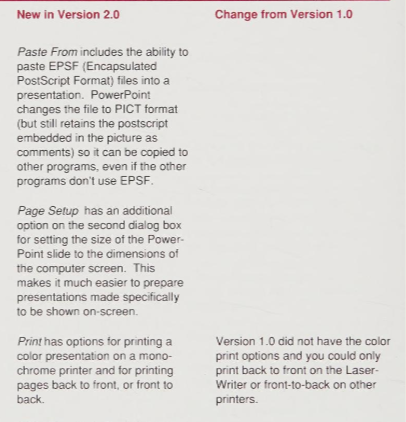Word Processors are everywhere and have some of the most recognizable file formats. Some are very simple in that they just contain plain text, others are more complex. There are formats which allow for images and others which can handle different languages and writing directions.
A writing platform I recently learned about is called Scrivener. It was first released in 2007 by a company called Literature & Latte Ltd, and has a Macintosh and Windows version. The software is marketed toward writers as there is some features that help with note taking, research and much more. It also allows for adding multimedia and even full webpages.
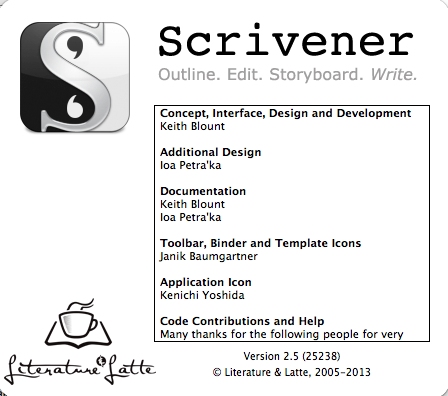
This is accomplished by a file format which uses a non-traditional method for storing all the data needed to render the format.
tree Scrivener3-s01.scriv
Scrivener3-s01.scriv
├── Files
│ ├── Data
│ │ ├── 921B4A08-54C0-4B69-94FD-428F56FDAB89
│ │ │ └── content.rtf
│ │ └── docs.checksum
│ ├── binder.autosave
│ ├── binder.backup
│ ├── search.indexes
│ ├── styles.xml
│ ├── version.txt
│ └── writing.history
├── Scrivener3-s01.scrivx
└── Settings
├── recents.txt
├── ui-common.xml
└── ui.ini
Scrivener uses a folder structure to store all the data used in the format. The folder has an extension, .scriv. The format includes some rich text, backups, indexes, version history and more. One unique format within the folder is an XML file with the extension .scrivx. This makes the format proprietary and can only be rendered using the Scrivener software.
cat Scrivener3-s01.scrivx | head
<?xml version="1.0" encoding="UTF-8"?>
<ScrivenerProject Template="No" Version="2.0" Identifier="DF5DA7F0-27DB-4815-A050-B4D6F23CABA7" Creator="SCRWIN-3.1.5.1" Device="DESKTOP-JMM4K7M" Modified="2025-03-14 22:15:28 -0600" ModID="B4A944C3-FF79-49F6-A737-158BEB4E58BB">
<Binder>
<BinderItem UUID="17807D28-117A-409E-B12D-B34922B6CC6F" Type="DraftFolder" Created="2025-03-14 22:15:17 -0600" Modified="2025-03-14 22:15:17 -0600">
<Title>Draft</Title>
<MetaData>
<IncludeInCompile>Yes</IncludeInCompile>
</MetaData>
<Children>
<BinderItem UUID="921B4A08-54C0-4B69-94FD-428F56FDAB89" Type="Text" Created="2025-03-14 22:15:17 -0600" Modified="2025-03-14 22:15:23 -0600">
The XML has enough to be able to identify them apart from other XML files. The signature would be straight forward. Earlier versions of Scrivener sometimes have the SCRIVX file but also sometimes has a
.scrivproj extension. This file on a Macintosh is in a Binary plist format, which is different than earlier Windows versions. Seems they may have unified them under version 2 or 3, where version 1 & 2 for Windows uses Project version 1 and version 3 uses project version 2.
hexdump -C Scrivener1-s01.scriv/binder.scrivproj | head
00000000 62 70 6c 69 73 74 30 30 d4 00 01 00 02 00 03 00 |bplist00........|
00000010 04 00 05 00 1d 01 d8 01 d9 54 24 74 6f 70 58 24 |.........T$topX$|
00000020 6f 62 6a 65 63 74 73 58 24 76 65 72 73 69 6f 6e |objectsX$version|
00000030 59 24 61 72 63 68 69 76 65 72 dc 00 06 00 07 00 |Y$archiver......|
00000040 08 00 09 00 0a 00 0b 00 0c 00 0d 00 0e 00 0f 00 |................|
00000050 10 00 11 00 12 00 13 00 14 00 15 00 16 00 17 00 |................|
00000060 18 00 19 00 1a 00 15 00 1b 00 1c 5a 4c 61 62 65 |...........ZLabe|
00000070 6c 54 69 74 6c 65 59 4c 61 62 65 6c 4c 69 73 74 |lTitleYLabelList|
00000080 5e 42 69 6e 64 65 72 43 6f 6e 74 65 6e 74 73 5f |^BinderContents_|
00000090 10 0f 44 65 66 61 75 6c 74 4c 61 62 65 6c 54 61 |..DefaultLabelTa|
Since the developers of Scrivener decided to make the SCRIV format simply a folder with different content within, something special happens on the MacOS. The Scrivener software registers all the extensions is uses with the MacOS launch services. This process then changes the way the SCRIV folder is displayed in the MacOS Finder. They now appears as a single file and given a file type. This is called a Document Package format.

By right-clicking on the “file” you can then browse the package contents. There is nothing in the folder itself or hidden in any attributes which causes this to happen, it is all controlled by what extensions have been registered with the launch services database. We can however ask the MacOS to give us some extended metadata details about the package, as long as the file is on a Apple filesystem like HFS or APFS.
mdls Scrivener3-s01.scriv
_kMDItemDisplayNameWithExtensions = "Scrivener3-s01.scriv"
kMDItemContentCreationDate = 2025-03-15 04:15:17 +0000
kMDItemContentCreationDate_Ranking = 2025-03-15 00:00:00 +0000
kMDItemContentModificationDate = 2025-03-15 04:15:18 +0000
kMDItemContentModificationDate_Ranking = 2025-03-15 00:00:00 +0000
kMDItemContentType = "com.literatureandlatte.scrivener3.scriv"
kMDItemContentTypeTree = (
"com.literatureandlatte.scrivener3.scriv",
"public.directory",
"public.item",
"com.apple.package",
"public.content",
"public.composite-content"
)
kMDItemDateAdded = 2025-03-21 04:38:48 +0000
kMDItemDateAdded_Ranking = 2025-03-21 00:00:00 +0000
kMDItemDisplayName = "Scrivener3-s01.scriv"
kMDItemDocumentIdentifier = 0
kMDItemFSContentChangeDate = 2025-03-15 04:15:18 +0000
kMDItemFSCreationDate = 2025-03-15 04:15:17 +0000
kMDItemFSCreatorCode = ""
kMDItemFSFinderFlags = 0
kMDItemFSHasCustomIcon = (null)
kMDItemFSInvisible = 0
kMDItemFSIsExtensionHidden = 0
kMDItemFSIsStationery = (null)
kMDItemFSLabel = 0
kMDItemFSName = "Scrivener3-s01.scriv"
kMDItemFSNodeCount = 3
kMDItemFSOwnerGroupID = 20
kMDItemFSOwnerUserID = 501
kMDItemFSSize = 31155
kMDItemFSTypeCode = ""
kMDItemInterestingDate_Ranking = 2025-03-15 00:00:00 +0000
kMDItemKind = "Scrivener Project"
kMDItemLogicalSize = 31155
kMDItemPhysicalSize = 69632
There is a lot of additional details available using the MDLS command, this includes the content type of “com.apple.package“. This tools works with any files in MacOS and can be a very useful tool in getting all the information you may need for preservation needs.
Until the tools we use for format identification can recognize package formats, tools like this may be needed to gather the neccessary metadata for preservation. But in the meantime, identification of the package content is the best we can hope for. Creating a signature for the XML based SCRIVX format is the first step.
Stay tuned for more on the package format as I will be bring it up more in the Digital Preservation community.
